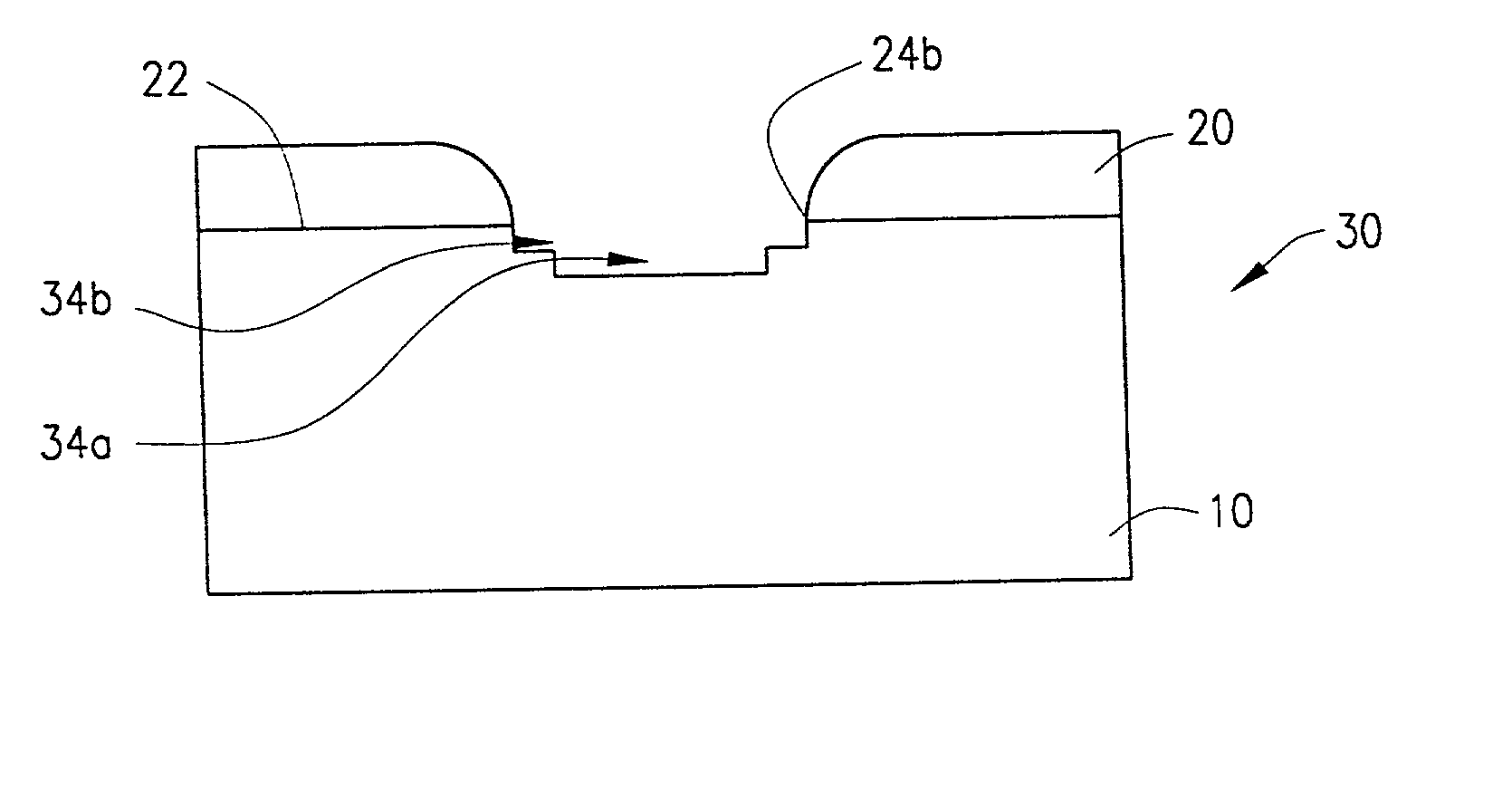Sloped trench etching process
a trench etching and slope technology, applied in the direction of acceleration measurement using interia forces, instruments, coatings, etc., can solve the problems of high undesirable difficulty in suitably addressing, and difficulty in trench profiles where the substrate is undercut with respect to a patterning mask or the appearance of cusping under the mask is high
- Summary
- Abstract
- Description
- Claims
- Application Information
AI Technical Summary
Benefits of technology
Problems solved by technology
Method used
Image
Examples
Embodiment Construction
[0032] FIGS. 1-7 schematically illustrate steps of a sloped trench etching process according to a presently preferred embodiment of the invention, and FIG. 8 is a flow chart which summarizes steps of the process.
[0033] FIG. 1 illustrates a semiconductor substrate, for example, a silicon substrate, in which a trench is to be formed. The substrate is generally designated by reference number 10; and, as shown in FIG. 1, is initially provided with a mask member in the form of a resist layer 20 on upper surface 22 thereof from which the trench is to extend into the substrate. The substrate 10 having the resist layer 20 thereon is sometimes generally referred to herein as a wafer 30. As also shown in FIG. 1, the resist layer 20 includes a suitably formed and located opening 24 therein which defines an exposed area or region 25 on the surface 22 of the substrate 10 at which the trench is to be formed.
[0034] Although it is not essential to the practice of the method of the present invention...
PUM
| Property | Measurement | Unit |
|---|---|---|
| Length | aaaaa | aaaaa |
| Angle | aaaaa | aaaaa |
| Angle | aaaaa | aaaaa |
Abstract
Description
Claims
Application Information
 Login to View More
Login to View More - R&D
- Intellectual Property
- Life Sciences
- Materials
- Tech Scout
- Unparalleled Data Quality
- Higher Quality Content
- 60% Fewer Hallucinations
Browse by: Latest US Patents, China's latest patents, Technical Efficacy Thesaurus, Application Domain, Technology Topic, Popular Technical Reports.
© 2025 PatSnap. All rights reserved.Legal|Privacy policy|Modern Slavery Act Transparency Statement|Sitemap|About US| Contact US: help@patsnap.com



